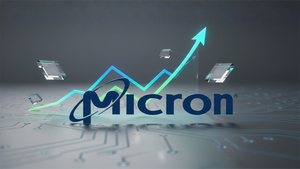- Plozasiran induced deep and sustained reductions in triglycerides and impacted a wide spectrum of lipoproteins that may be involved with atherosclerotic cardiovascular disease
- Similar responses were observed in patients with genetically confirmed and clinically diagnosed FCS
- Mean reductions in triglycerides of up to -73% in patients from MUIR and -86% in patients from SHASTA-2 with favorable reductions in remnant cholesterol and non-HDL-cholesterol through 15 months follow up in the OLE
Arrowhead Pharmaceuticals, Inc. (NASDAQ: ARWR) today announced new results from the Phase 3 PALISADE study and the open-label extension from the Phase 2 MUIR and SHASTA-2 studies of investigational plozasiran. These data were presented in two oral presentations at the American Heart Association Scientific Sessions 2024 (AHA24) and PALISADE data was simultaneously published in the AHA journal, Circulation.
“In the Phase 3 PALISADE study in patients with and without a genetic confirmation of familial chylomicronemia syndrome (FCS), plozasiran induced deep and sustained reductions in triglycerides and impacted a wider spectrum of lipoproteins that may be involved with atherosclerotic cardiovascular disease. Importantly, responses were independent of specific known gene variants causing FCS,” said Bruce Given, M.D., chief medical scientist at Arrowhead. “In the open-label extension (OLE) from the Phase 2 MUIR and SHASTA-2 studies, extended treatment with 25 mg of plozasiran in patients with moderate to severely elevated triglycerides produced mean reductions through 15 months follow-up in the OLE in triglycerides of up to -73% in patients originally from the MUIR study and -86% in patients originally from the SHASTA-2 study with favorable reductions in remnant cholesterol and non-HDL-cholesterol. These data from PALISADE and the MUIR and SHASTA-2 OLE further support the development of plozasiran as a promising investigational therapy for multiple potential study populations, including those living with FCS, severe hypertriglyceridemia, and mixed hyperlipidemia.”
AHA24 Presentation Details
Title: PALISADE: A Phase 3 Study to Assess the Efficacy and Safety of Plozasiran in Adults with Genetically or Clinically-Defined Familial Chylomicronemia Syndrome (FCS) at High Risk of Acute Pancreatitis (AP)
Date/Time: November 16, 2024, 2:04 pm CST
Presenter: Gerald Watts
Session: Featured Science: Novel Approaches to Managing Lipid Risk
Title: Plozasiran and Triglyceride Levels in Hypertriglyceridemia: Long-Term Efficacy and Safety Data from Subjects in an Open-Label Extension Trial (MUIR and SHASTA-2 OLE)
Date/Time: November 18, 2024, 10:45 am CST
Presenter: Christie Ballantyne
Session: New Insights in Lipids and lipid lowering therapies
Slides from the AHA24 presentations may be accessed on the Events and Presentations page in the Investors section of the Arrowhead website after the oral presentation concludes.
Select PALISADE Results
In PALISADE, 75 patients with FCS, with or without a genetic diagnosis, were randomly assigned to receive subcutaneous plozasiran at 25 mg (n=26) or 50 mg (n=24) or placebo (n=25) every three months for 12 months. At baseline, the median triglyceride level was 2044 mg/dL. Forty-four patients (59%) had genetically confirmed FCS and 31 patients (41%) had clinically diagnosed FCS.
Plozasiran, at the 25 mg dose being proposed for marketing approval, induced rapid, deep, and sustained reductions in apolipoprotein C-III (APOC3), of greater than -90%, and in triglycerides (TG), of approximately -80%, independent of gene variants causing FCS. At least half of the patients maintained TGs below 500 mg/dL, a threshold associated with increased risk of acute pancreatitis, with approximately 75% achieving levels below 880 mg/dL, and greater than 80% achieving levels below 1000 mg/dL, invariant of FCS genotype.
Plozasiran decreased total cholesterol (TC) with least square (LS) mean reductions of -41%, non-high-density lipoprotein cholesterol (non-HDL-C) of -50%, and remnant cholesterol or very-low-density lipoprotein cholesterol (VLDL-C) of -67%, with reciprocal increases in HDL-C of 52%, and apolipoprotein-AI (ApoA-I) of 21% at 12 months. Plozasiran increased low-density lipoprotein cholesterol (LDL-C) levels without increases in total ApoB or ApoB-100.
Select MUIR and SHASTA-2 OLE Results
In the OLE, a total of 418 subjects from the Phase 2 MUIR study in patients with mixed hyperlipidemia and the SHASTA-2 study in patients with severe hypertriglyceridemia entered the extension in which all received plozasiran 25 mg dosed quarterly.
10, 25, or 50 mg of plozasiran in the blinded portion of the studies produced mean reductions in TGs up to -64% in MUIR and up to -74% in SHASTA-2 at 24 weeks representing the trough after the second quarterly dose. Corresponding trough reductions in the extension were maintained up to -73% in patients from MUIR and -86% in patients from SHASTA-2 through 15 months follow-up.
Favorable sustained reductions in TGs and APOC3, decreases in remnant cholesterol, non-HDL-C, favorable changes in apoB, and increases in HDL-C were observed, with no changes in LDL-C or Lp(a) and remained durable over the duration of the open-label extension. No worsening of HbA1c and no new onset diabetes mellitus were observed, providing further evidence that long-term safety appears favorable with repeated dosing and longer observation periods.
Safety and Tolerability
Overall, plozasiran has been generally well-tolerated to date. In the PALISADE study, the most frequently reported treatment emergent adverse events for the 25 mg dose were abdominal pain, COVID-19, nasopharyngitis, and nausea. Across clinical studies and study populations, the most frequently reported treatment emergent adverse events for the 25 mg dose were COVID-19, upper respiratory tract infection, headache, Type 2 diabetes mellitus, and abdominal pain.
About Familial Chylomicronemia Syndrome
Familial chylomicronemia syndrome (FCS) is a severe and rare disease often caused by various monogenic mutations. FCS leads to extremely high triglyceride (TG) levels, typically over 880 mg/dL. Such severe elevations can lead to various serious signs and symptoms including acute and potentially fatal pancreatitis, chronic abdominal pain, diabetes, hepatic steatosis, and cognitive issues. Currently, there are no therapeutic options that can adequately treat FCS in the US.
About Severe Hypertriglyceridemia
Severe hypertriglyceridemia (SHTG) is characterized by triglyceride (TG) levels greater than 500 mg/dL. Very severe forms (TG greater than 880 mg/dL) include familial chylomicronemia syndrome (FCS) and multifactorial chylomicronemia syndrome (MCS). SHTG significantly increases the risk of atherosclerotic cardiovascular disease (ASCVD) and acute pancreatitis (AP), often with recurrent attacks requiring repeat hospital admissions and worsening outcomes. AP risk is proportional to number, characteristics, and concentration of triglyceride rich lipoproteins (TRLs), particularly chylomicrons, and increases as TGs rise. Limited treatment options exist to sustainably reduce TGs below the pancreatitis risk threshold.
About Mixed Hyperlipidemia
Mixed hyperlipidemia, also called mixed dyslipidemia, is a highly prevalent disorder characterized by elevated low-density lipoprotein cholesterol (LDL-C) and triglyceride levels. Despite the efficacy of LDL-C-lowering therapies in reducing atherosclerotic cardiovascular disease (ASCVD) risk in mixed hyperlipidemia, there remains substantial residual risk attributed to elevated non-HDL driven by remnant cholesterol in triglyceride-rich lipoproteins. Genome-wide association and Mendelian randomization studies also support a causal role for triglyceride rich lipoproteins in ASCVD.
About Plozasiran
Plozasiran, previously called ARO-APOC3, is a first-in-class investigational RNA interference (RNAi) therapeutic designed to reduce production of apolipoprotein C-III (APOC3) which is a component of triglyceride rich lipoproteins (TRLs) and a key regulator of triglyceride metabolism. APOC3 increases triglyceride levels in the blood by inhibiting breakdown of TRLs by lipoprotein lipase and uptake of TRL remnants by hepatic receptors in the liver. The goal of treatment with plozasiran is to reduce the level of APOC3, thereby reducing triglycerides and restoring lipids to more normal levels.
In multiple clinical studies, investigational plozasiran has demonstrated reductions in triglycerides and multiple atherogenic lipoproteins in patients with familial chylomicronemia syndrome (FCS), severe hypertriglyceridemia (SHTG), and mixed hyperlipidemia. Plozasiran has been generally well tolerated to date with treatment emergent adverse events reported that generally reflect the comorbidities and underlying conditions of the study populations. Across clinical studies and study populations, the most frequently reported treatment emergent adverse events for the 25 mg dose were COVID-19, upper respiratory tract infection, headache, Type 2 diabetes mellitus, and abdominal pain.
Plozasiran is being investigated in the SUMMIT program of clinical studies, including the PALISADE Phase 3 study in patients with FCS, the SHASTA studies in patients with SHTG, and the MUIR and CAPITAN studies in patients with mixed hyperlipidemia.
Plozasiran in the treatment of patients with FCS has been granted Breakthrough Therapy Designation, Orphan Drug Designation, and Fast Track Designation by the U.S. Food and Drug Administration and Orphan Drug Designation by the European Medicines Agency. Investigational plozasiran has not been reviewed or approved to treat any disease.
About PALISADE Phase 3 Study
The PALISADE study (NCT05089084) is a Phase 3 placebo controlled study to evaluate the efficacy and safety of plozasiran in adults with genetically confirmed or clinically diagnosed FCS. The primary endpoint of the study is percent change from baseline in fasting TG versus placebo at Month 10. A total of 75 subjects distributed across 39 different sites in 18 countries were randomized to receive 25 mg plozasiran, 50 mg plozasiran, or matching placebo once every three months. Participants who completed the randomized period were eligible to continue in a 2-part extension period, where all participants receive plozasiran.
About MUIR Phase 2 Study
MUIR (NCT04998201) is a double-blind, placebo-controlled Phase 2b clinical study in adults with mixed hyperlipidemia. Plozasiran was evaluated against placebo in 353 participants who had fasting triglycerides between 150-499 mg/dL and either LDL-cholesterol greater than 70 mg/dL or non-HDL-cholesterol greater 100 mg/dL. Participants were randomly assigned in a 3:1 ratio to receive 10, 25, or 50 mg plozasiran or placebo by subcutaneous injections on day 1 and week 12, or 50 mg plozasiran or placebo on day 1 and week 24. The primary objective of the study was to evaluate the safety and efficacy of plozasiran in adults with mixed hyperlipidemia.
About SHASTA-2 Phase 2 Study
SHASTA-2 (AROAPOC3-2001) is a double-blind, placebo-controlled Phase 2b study in adults with SHTG. Three dose levels of plozasiran (10 mg, 25 mg and 50 mg) were evaluated against placebo in 229 participants who had mean fasting triglycerides of greater than or equal to 500 mg/dL (5.65 mmol/L) at screening. Participants were randomly assigned in a 3:1 ratio to receive plozasiran or placebo. Each participant received subcutaneous injections on day 1 and week 12. The duration of the study was approximately 54 weeks from screening to the week 48 end-of-study examination. The primary objective of the study was to evaluate the safety and efficacy of plozasiran in adults with SHTG and to select a dosing regimen for later stage clinical studies in this patient population.
About Plozasiran EAP
Arrowhead is committed to bringing new investigational medicines to patients with serious diseases as quickly and efficiently as possible. The company has established an expanded access program (EAP) for some individuals living with FCS. As with any investigational medicine that has not been approved by regulatory authorities, investigational plozasiran may or may not be effective in treating your diagnosis or condition, and there may be risks associated with its use. If you are a patient or caregiver wishing to know more about this plozasiran EAP for FCS, please discuss this EAP and all treatment options with your treating physician. If you are a treating physician and are seeking information about the plozasiran EAP or would like to request access for a patient, please contact EAP@arrowheadpharma.com.
About Arrowhead Pharmaceuticals
Arrowhead Pharmaceuticals develops medicines that treat intractable diseases by silencing the genes that cause them. Using a broad portfolio of RNA chemistries and efficient modes of delivery, Arrowhead therapies trigger the RNA interference mechanism to induce rapid, deep, and durable knockdown of target genes. RNA interference, or RNAi, is a mechanism present in living cells that inhibits the expression of a specific gene, thereby affecting the production of a specific protein. Arrowhead’s RNAi-based therapeutics leverage this natural pathway of gene silencing.
For more information, please visit www.arrowheadpharma.com, or follow us on X (formerly Twitter) at @ArrowheadPharma, LinkedIn, Facebook, and Instagram. To be added to the Company's email list and receive news directly, please visit http://ir.arrowheadpharma.com/email-alerts.
Safe Harbor Statement under the Private Securities Litigation Reform Act:
This news release contains forward-looking statements within the meaning of the "safe harbor" provisions of the Private Securities Litigation Reform Act of 1995. Any statements contained in this release except for historical information may be deemed to be forward-looking statements. Without limiting the generality of the foregoing, words such as “may,” “will,” “expect,” “believe,” “anticipate,” “hope,” “intend,” “plan,” “project,” “could,” “estimate,” “continue,” “target,” “forecast” or “continue” or the negative of these words or other variations thereof or comparable terminology are intended to identify such forward-looking statements. In addition, any statements that refer to projections of our future financial performance, trends in our business, expectations for our product pipeline or product candidates, including anticipated regulatory submissions and clinical program results, prospects or benefits of our collaborations with other companies, or other characterizations of future events or circumstances are forward-looking statements. These forward-looking statements include, but are not limited to, statements about the initiation, timing, progress and results of our preclinical studies and clinical trials, and our research and development programs; our expectations regarding the potential benefits of the partnership, licensing and/or collaboration arrangements and other strategic arrangements and transactions we have entered into or may enter into in the future; our beliefs and expectations regarding milestone, royalty or other payments that could be due to or from third parties under existing agreements; and our estimates regarding future revenues, research and development expenses, capital requirements and payments to third parties. These statements are based upon our current expectations and speak only as of the date hereof. Our actual results may differ materially and adversely from those expressed in any forward-looking statements as a result of numerous factors and uncertainties, including the impact of the ongoing COVID-19 pandemic on our business, the safety and efficacy of our product candidates, decisions of regulatory authorities and the timing thereof, the duration and impact of regulatory delays in our clinical programs, our ability to finance our operations, the likelihood and timing of the receipt of future milestone and licensing fees, the future success of our scientific studies, our ability to successfully develop and commercialize drug candidates, the timing for starting and completing clinical trials, rapid technological change in our markets, the enforcement of our intellectual property rights, and the other risks and uncertainties described in our most recent Annual Report on Form 10-K, subsequent Quarterly Reports on Form 10-Q and other documents filed with the Securities and Exchange Commission from time to time. We assume no obligation to update or revise forward-looking statements to reflect new events or circumstances.
Source: Arrowhead Pharmaceuticals, Inc.
View source version on businesswire.com: https://www.businesswire.com/news/home/20241118400458/en/
Contacts
Arrowhead Pharmaceuticals, Inc.
Vince Anzalone, CFA
626-304-3400
ir@arrowheadpharma.com
Investors:
LifeSci Advisors, LLC
Brian Ritchie
212-915-2578
britchie@lifesciadvisors.com
Media:
LifeSci Communications, LLC
Kendy Guarinoni, Ph.D.
724-910-9389
kguarinoni@lifescicomms.com






